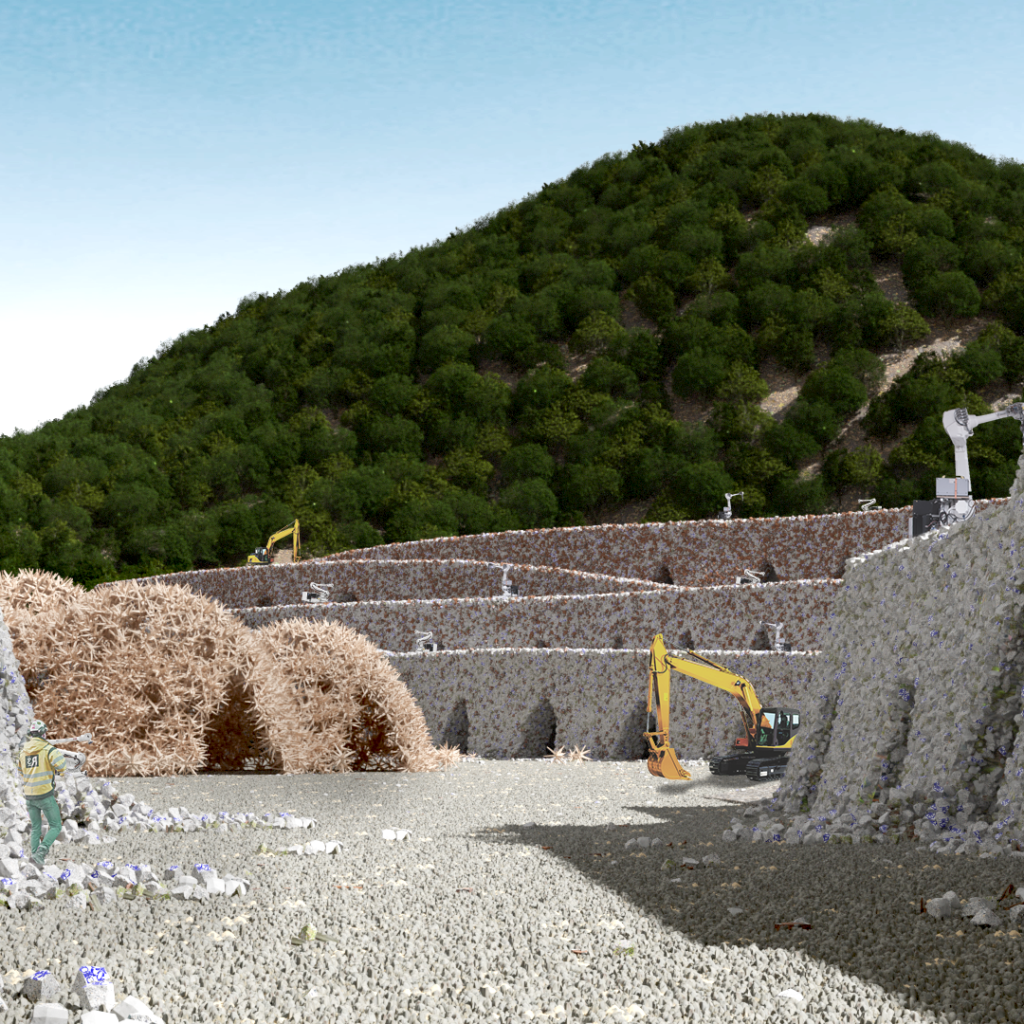Jamming Structures: Aggregations of Construction and Demolition Waste Transforming over Time
In 2012, construction and demolition (C&D) waste accounted for half of all the global waste that ended up in landfills. It is well-documented that materials used in the building process have a harmful impact on the environment. Most of the building waste ends up in backfilling operations or directly in landfills. Reuse of building materials is considered necessary for reducing C&D waste and material consumption. Despite its importance, the research of reuse has remained relatively unexplored to traditional construction methods in which elements are permanently joined together.
Granular jamming is described as the transition from a collection of loose and unbound particles into a highly packed and rigid aggregation. In contrast to permanent bonding, the particles are stabilized through compression when packed within a confined space. The absence of any binding between particles allows the aggregated structure to be completely reversible. Over the last years, research on jamming and its possible use in architectural construction has pushed the boundaries of the material system. Instead of using external constraints, ETH developed a system in which string was used as confinement to create large scale aggregated structures. Alternatively, ICD designed a particle shape that interlocked with one another without any type of confinement.
This thesis project focused on the reversibility of aggregated structures and how they slowly changed over a long time period when subjected to natural processes and human intervention. Design speculation was used to investigate how C&D waste at SENT landfill in Hong Kong can be jammed together to create a landscape of aggregated structures that add to the currently low stock of open spaces in Hong Kong and shelter the visitors from overheating. Taking its departure from research on granular jamming and its possible architectural application conducted at the ETH, the thesis also incorporates both material and digital experiments and precedence such as drystone architecture and aggregate studies in other materials in order to better understand the material system’s capacity to function as a construction material. Ultimately, the thesis embodied the characteristics of granular jamming in a speculative design proposal that aimed to spark a discussion on the future implications of aggregated structures.
